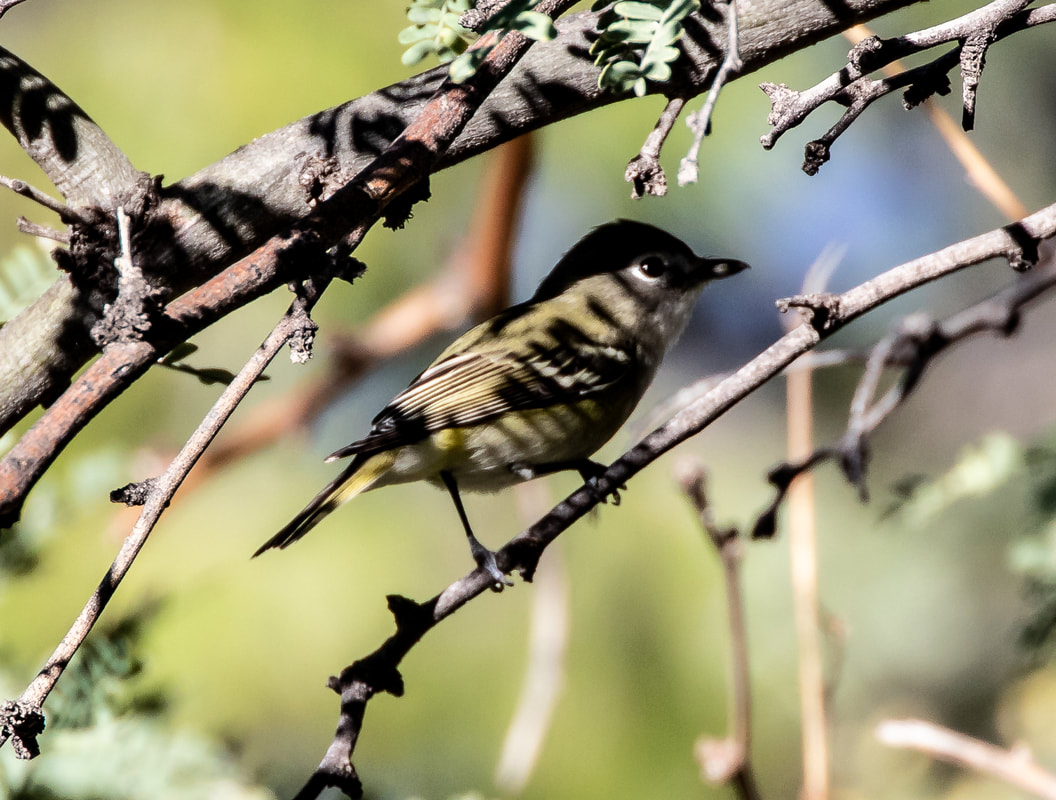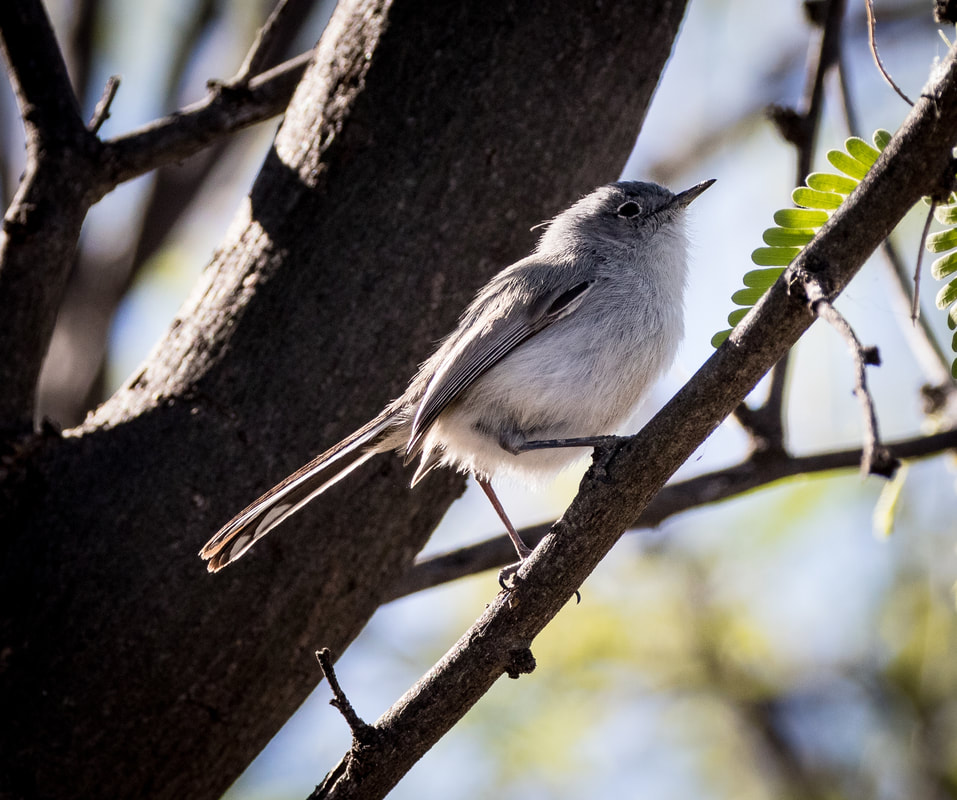|
Cassin's Vireo, October 25th Cassin's Vireo is a small songbird similar in appearance to the Plumbeous Vireo but with more green on the back and yellow flanks. They breed in the Pacific Northwest and winter in southern Mexico. SE Arizona is in their migration path, so this bird is likely on his way to the warm climes of Mexico for the winter. They eat insects and forage twigs and foliage in a slow and deliberate manner. The image above was the best of the series I was able to get last Thursday. The camera appears to have focused on a branch in front of the bird, putting our subject a bit out of focus, giving us that soft focus Art Deco look of the 1930's. Yeah, I know, out of focus . . . Below are three images of better quality captured at Sweetwater Wetlands in November of 2015. We can see the bird's white "spectacles" and two white wingbars, the forward one being more subtle. A November sighting, this is likely also a migrant who has stopped for a bite on the way to the Mexican Riviera. The middle image shows the bird in mid-hop as he turns to face our right. Black-tailed GnatcatcherBlack-tailed Gnatcatcher, October 25th. Black-tailed Gnatcatchers are small songbirds of the southwest, living year round in desert scrub from SE California, southern Arizona, southern New Mexico, and into northern Mexico. They eat almost exclusively insects, and can live far from water sources. They move quickly in low bushes looking for a variety of insects. The image above was the only one I got of this fast moving bird. Food (understandably) was more important than posing for a bunch of birders. Fortunately I have other images in my library. The photo below was captured also at Agua Caliente almost one year ago, September 2017. Black-tailed Gnatcatchers are gray with a white eye ring, which is easy to see here, and a black tail with white flashes on the underside. Breeding males have a black cap, which we do not see here. They form lasting pairs and protect the same patch of desert year-round. The images below were also captured at Agua Caliente, but in March of this year. Given the bird's habits, it is possible that we are seeing the same bird or birds from month to month in the park.  The white flashes on the tail are easy to see in the images above and below. One final shot shows the bird mid-hop with wings up. These birds are fast. This was shot at 1//1000 second, with the feet and tail fairly sharp with blurring on the wings and head. That's all for now. Happy trails!
0 Comments
Leave a Reply. |
AuthorHenry Johnson, photographer and author of this site. For more detail, see About
Categories
All
Archives
July 2024
|










 RSS Feed
RSS Feed